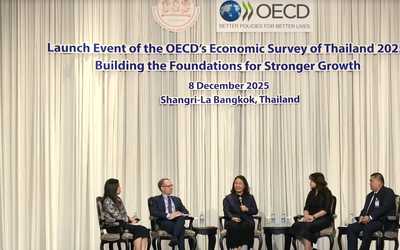Surviving Loss: Coping Strategies among Widow Households in Thai Rural Areas
Abstract
This study investigates the impact of the death of the primary earner of the household on the labor supply decision of the remaining household member in rural areas, in contrast to literature which often focuses on more developed societies with complete public insurance coverage. We found widow households could maintain the same level of consumption with only a temporary decline in savings. They achieved this by taking over the household business and receiving support from children and other relatives who moved in to assist, with the responsibility falling on daughters rather than sons. On the contrary, widowers withdrew from the labor force after the death of their wives. The di erence in responses could be explained by the income gain to the remaining household members. Widows also experienced a rise in gift income and a decrease in public transfer.








